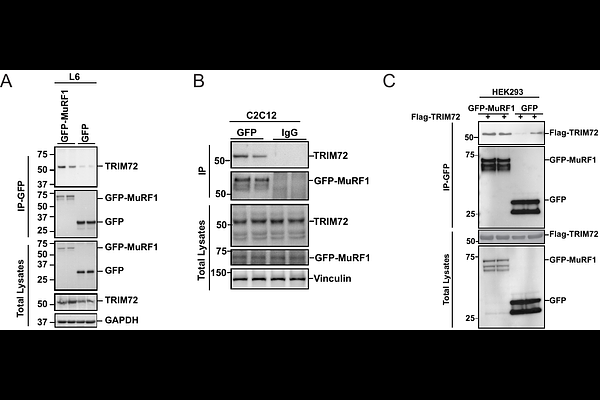MuRF1 partners with TRIM72 to impair insulin signalling in skeletal muscle cells

MuRF1 partners with TRIM72 to impair insulin signalling in skeletal muscle cells
Musa, I.; Seabright, A. P.; Nishimura, Y.
AbstractMuscle RING-finger protein 1 (MuRF1, gene name: TRIM63) is well known as a critical molecular regulator in skeletal muscle atrophy. Despite the identification of several substrates and interaction partners for MuRF1, the precise molecular mechanisms by which MuRF1 causes skeletal muscle atrophy remain unclear. To gain further insight into the underlying mechanism of skeletal muscle atrophy, we applied targeted biochemical approaches, and identified tripartite motif-containing protein 72 (TRIM72) as a novel MuRF1-interacting protein. Subsequent analysis using MuRF1 knockout and rescue experiments showed that TRIM72 protein abundance is dependent on the presence of MuRF1 protein. Furthermore, TRIM72 protein level was increased by dexamethasone treatment in C2C12 myotubes, alongside increased MuRF1 protein level. Dexamethasone decreases IRS1/Akt signalling, protein synthesis, and glucose uptake specifically in wild-type myotubes, but not in MuRF1 KO myotubes. Further analysis showed that overexpression of TRIM72 impairs IRS1/Akt signalling without the presence of MuRF1, indicating that MuRF1 induces a negative impact on insulin signalling through a plausible cooperation with TRIM72. Our findings provide novel non-degradative molecular roles of MuRF1 that link together skeletal muscle atrophy and impaired insulin responses.